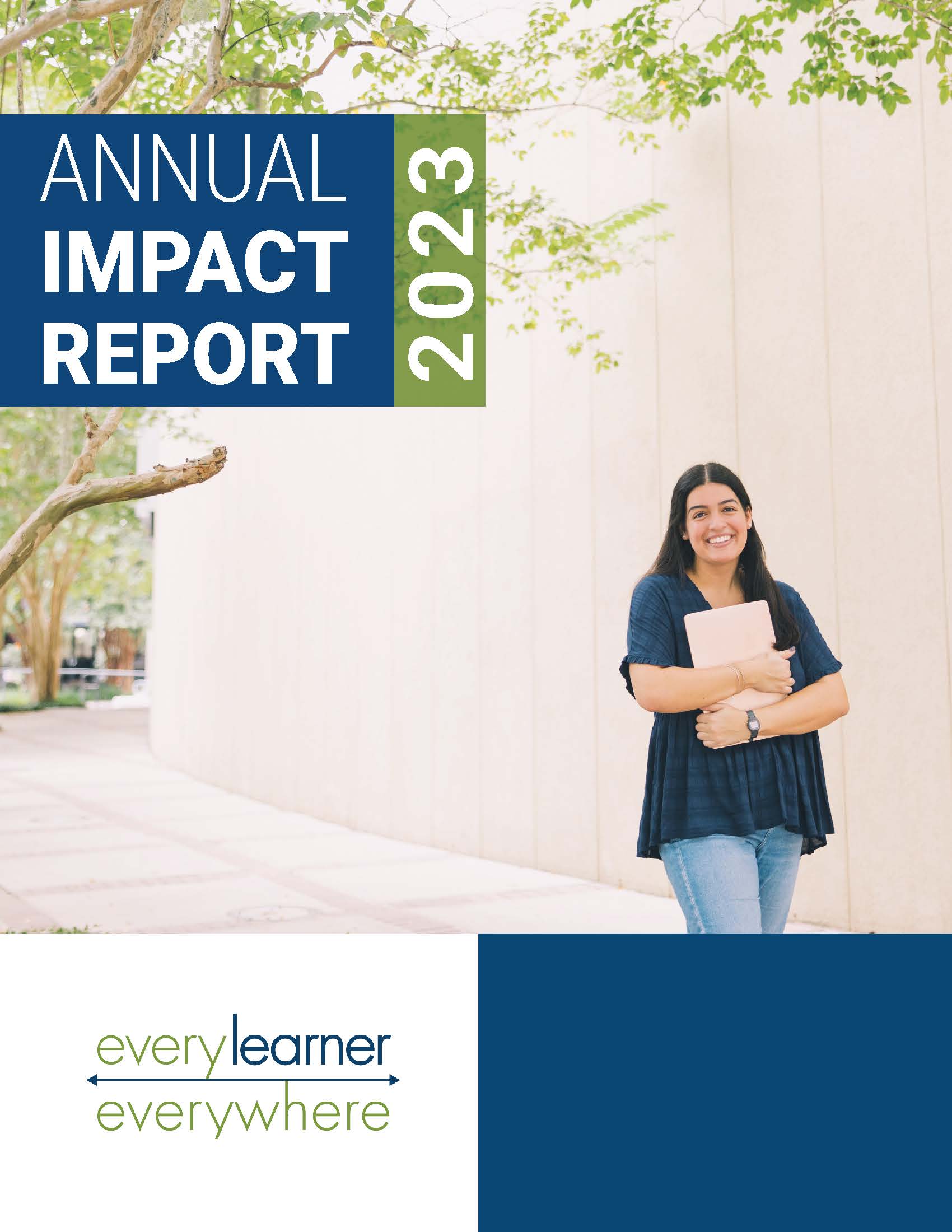The Blended Institution of Higher Education: A Model for a Sustainable Institution presents a vision for an innovative institutional model informed by research and analyses. It is a model that moves beyond the proven blended course and program models to an institutional-level model. Like blended learning, the blended institution of higher education (BIHE) positions students and their success at the center. It prioritizes equity to ensure success for all students — in particular, historically minoritized and other traditionally underrepresented students. The BIHE combines an array of technological and process elements to blend and thoughtfully integrate instruction, learning, support, and services for students. Blending these elements ensures relevant outcomes — or student success — align with the needs of the students while considering external factors, including needs of the evolving workforce and society.
The BIHE provides a vision and guides strategic planning for leaders for the future in developing their own version of the BIHE. This model was developed, in part, using systems thinking to analyze external (e.g., economics) and internal (e.g., organizational culture) factors informing the model of the blended institution of higher education. It provides academic leaders a broad view of factors and their influence as well as where internal shifts are needed to respond to these factors. Additionally, this view includes consideration of different components of an institution’s core functions situated within the context of external factors while being informed by research (e.g., what works, what is needed). The model guides leaders in building sustainable institutions by performing systems thinking and implementing a responsive and proactive institutional strategy that can create conditions for stability even in uncertain times.
In guiding leaders beyond reactive management strategies to strategic leadership, this resource examines the relationship between an institutional system and its environment while considering the needed transformation of internal components and the interrelatedness of those internal components. It presents a vision for the BIHE, so leaders can successfully plan strategic efforts and carry out activities while considering a primary outcome of the institution, student success, as a key to sustainability. With attention to deconstructing barriers to student success and creating equitable experiences, academic leaders can catalyze strategic institutional change creating an environment for sustainability.
Download Guide






